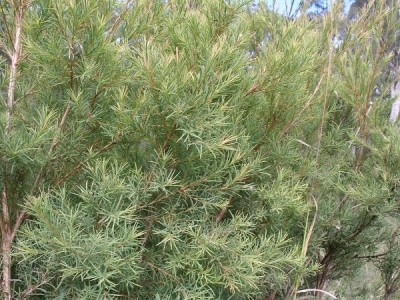Chinese brands have new edge on competition with tea flavored toothpaste

According to Reuters, local firms have been given an edge by understanding its' peoples needs, which is forcing the likes of P&G to adapt their products to compete.
Analysts say Hawley & Hazel and its Hong Kong-based founders are leading the domestic market by playing to Chinese tastes with green tea and jasmine flavours while Yunnan Baiyao Group uses the fact that it is one of the oldest traditional Chinese medicine makers, as a selling point.
In fact, Reuters experts say that now more than ever, local and global brands are targeting the same customers and China's players are coming up on top.
"Nearly two-thirds of foreign brands surveyed lost market share in China last year," they report.
Green tea in cosmetics
According to Chinese scientists, green tea is a good candidate for personal care products, particularly skin care, for its moisture absorption and retention properties as well as its antioxidant qualities.
The antioxidant properties of the polyphenols found in Camellia sinesis, more commonly known as green tea, have been well documented, but researchers at Shanghai Normal University argue that the moisturising qualities the polysaccharides equally make the substance an interesting cosmetic proposition.
According to a 2012 study, published in the Journal of Agricultural and Food Chemistry, the moisture absorption and retention of the polysaccharides in green tea is much stronger than the polyphenols.
Good sunscreen additive...
The researchers hypothesised that the green tea polyphenols absorbed both UVA and UVB rays, and this, along with their antioxidant properties, make them a good candidate for a sunscreen additive, according to the scientists.
In addition, the green tea polyphenols significantly increased fibroblast cell proliferation. As the fibroblasts and their activity decline with age and UV radiation, the scientists argued, the data further supports the use of green tea polyphenols in anti-ageing formulations.
“This indicated that a combination of TPS [green tea polysaccharides] and TPP [green tea polyphenols] would be a favorable possibility for protecting skin, especially for the good moisture retention ability of TPS and fibroblast proliferation effect and strong UV absorbance ability of TPP,” they concluded.




![Latest developments from the South Korean beauty market. [Getty Images]](/var/wrbm_gb_food_pharma/storage/images/_aliases/wrbm_tiny/publications/cosmetics/cosmeticsdesign-asia.com/headlines/brand-innovation/korea-focus-able-c-c-kolmar-and-more-in-this-k-beauty-round-up/17357973-1-eng-GB/Korea-focus-Able-C-C-Kolmar-and-more-in-this-K-beauty-round-up.jpg)

![Able C&C has furthered its partnership with Japanese discount chain Daiso with new makeup launch. [A'pieu]](/var/wrbm_gb_food_pharma/storage/images/_aliases/wrbm_tiny/publications/cosmetics/cosmeticsdesign-asia.com/headlines/brand-innovation/a-pieu-and-daiso-launch-exclusive-2-makeup-line/17339117-1-eng-GB/A-pieu-and-Daiso-launch-exclusive-2-makeup-line.jpg)
![Down Under Enterprises is setting sights on the Asian market as environmental sustainability and traceability become increasingly important. [Getty Images]](/var/wrbm_gb_food_pharma/storage/images/_aliases/wrbm_tiny/publications/cosmetics/cosmeticsdesign-asia.com/headlines/market-trends/down-under-enterprises-shifts-focus-to-china-as-environmental-sustainability-traceability-come-into-the-spotlight/17304932-1-eng-GB/Down-Under-Enterprises-shifts-focus-to-China-as-environmental-sustainability-traceability-come-into-the-spotlight.jpg)
![News updates from Shiseido, Dr.Ci:Labo, Sephora, and more. [Shiseido]](/var/wrbm_gb_food_pharma/storage/images/_aliases/wrbm_tiny/publications/cosmetics/cosmeticsdesign-asia.com/headlines/brand-innovation/updates-from-shiseido-dr.ci-labo-sephora-and-more/17334944-1-eng-GB/Updates-from-Shiseido-Dr.Ci-Labo-Sephora-and-more.jpg)

![Clariant has underscored the importance of localisation strategies and distribution capabilities in China with beauty trends evolving at a rapid pace. [Getty Images]](/var/wrbm_gb_food_pharma/storage/images/_aliases/wrbm_tiny/publications/cosmetics/cosmeticsdesign-asia.com/article/2024/04/16/clariant-emphasises-importance-of-localisation-in-the-era-of-viral-trends/17327969-1-eng-GB/Clariant-emphasises-importance-of-localisation-in-the-era-of-viral-trends.jpg)
